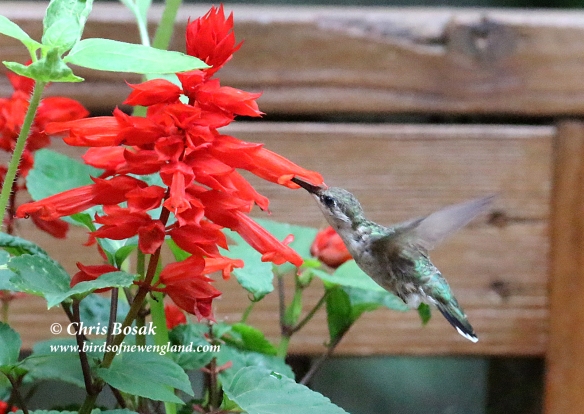
There’s nothing like hummingbirds to unite and excite North America.
Last week’s column on the timing of hummingbird migration apparently got ranked high on a popular internet search engine and blew up. I was wondering why I was suddenly getting emails from across the country and Canada. An editor from a New England newspaper emailed me to say the story had become the paper’s most popular story of 2023 overnight. The power of hummingbirds, I guess.
Emails came from British Columbia, California, Arizona, Indiana, Ohio, North Carolina, New Jersey, New York and each of the New England states. Even my aunt from Virgina texted me out of the blue to say she was directed to the article as well. Some of the regular For the Birds readers responded as well. I appreciated all the emails. Here is what some of the hummingbird fans had to say:
Carolanne from Atkinson, New Hampshire, said she recently became interested in hummingbirds as her “life has slowly quieted down” with her children now grown. She has more time to sit on her deck and watch the wildlife, and hummingbirds became a favorite of hers. She was amazed that hummingbirds fly across the Gulf of Mexico during migration and wondered why they don’t just remain in Florida. It’s an interesting thought, and researchers are discovering that some hummingbirds do indeed remain in Florida or Louisiana instead of making the trip across the Gulf.
Erika from Rye, New York, experienced a hummingbird season like I did. Very few in the spring and early summer and suddenly several in late summer.
Adrian from New Jersey pointed out the surprising and sad fact that praying mantises sometimes prey upon hummingbirds. He said he has seen it happen on his front porch near the feeder. I did an internet search on the subject and, sure enough, there are photos of mantises perched on hummingbird feeders waiting for a meal. If you see a praying mantis on your hummingbird feeder, now you know why.
Bernadette from Ohio is relatively new to feeding hummingbirds and she has had four since early June. “They bring joy to my yard,” she wrote.
Mary Ellen from Keene said it has been a fun birding season at her yard, particularly watching a male eastern bluebird feed its fledglings, but the hummingbird action has been limited. She did not notice any courting behavior, as she has in years past, and the hummingbirds showed up a week or so later than usual.
I received an incredible video from Anita in British Columbia that showed hundreds of hummingbirds at her feeders. British Columbia, of course, is on the West Coast where many additional species of hummingbirds may be seen. While the ruby-throated hummingbird is the only species regularly seen east of the Mississippi River, there are upwards of 13 species to be found out West. (There are more than 300 species throughout Central and South America.)
Anita estimates she had 350 hummingbirds in early July based on the amount of nectar consumed daily. At one point she was changing five four-cup feeders five times a day.
Staying out west, Marlin from Arizona says he gets many types of hummingbirds and even though the spring was slow, they came in droves during August, going through a gallon of sugar water each day. “There were hundreds of hungry and demanding beautiful little friends. We love the short time we have with them.”
From California, John writes that they have a never-ending cycle of hummingbirds as many breed there and many overwinter there. He mentioned Allen’s, Costa’s, ruby-throated, and rufous. “Hilariously territorial. If I stand near a feeder, one will hover in my face until I move back,” he wrote.
Moving back east, Linda from North Carolina says she and her husband have so many hummingbirds this year that they are going to add two more feeders to the three they already have up in order to slow down all the fighting. “Two males are extremely territorial, and it is hard for the smaller, younger birds to get to the feeders. We leave our feeders up until it gets cooler in October.
Similar to Anita’s video, Sherrel from Indiana sent an amazing clip of hundreds of hummingbirds eating and jockeying for position at a feeding station that included 13 feeders.
Pip from Long Island New York says they get hummingbirds until around September 15, based on previous years. Pip has two feeders spaced about 15 feet apart and has a trumpet vine nearby. A larger female hummingbird seems to tolerate a smaller one using the other feeder. “That was something new for me this year,” Pip wrote. “Additionally, one hummer investigated me for about 15 seconds within three feet of my face. Very exciting!”
Exciting indeed. Hummingbirds usually are. Thanks to all who wrote, from near and far.
